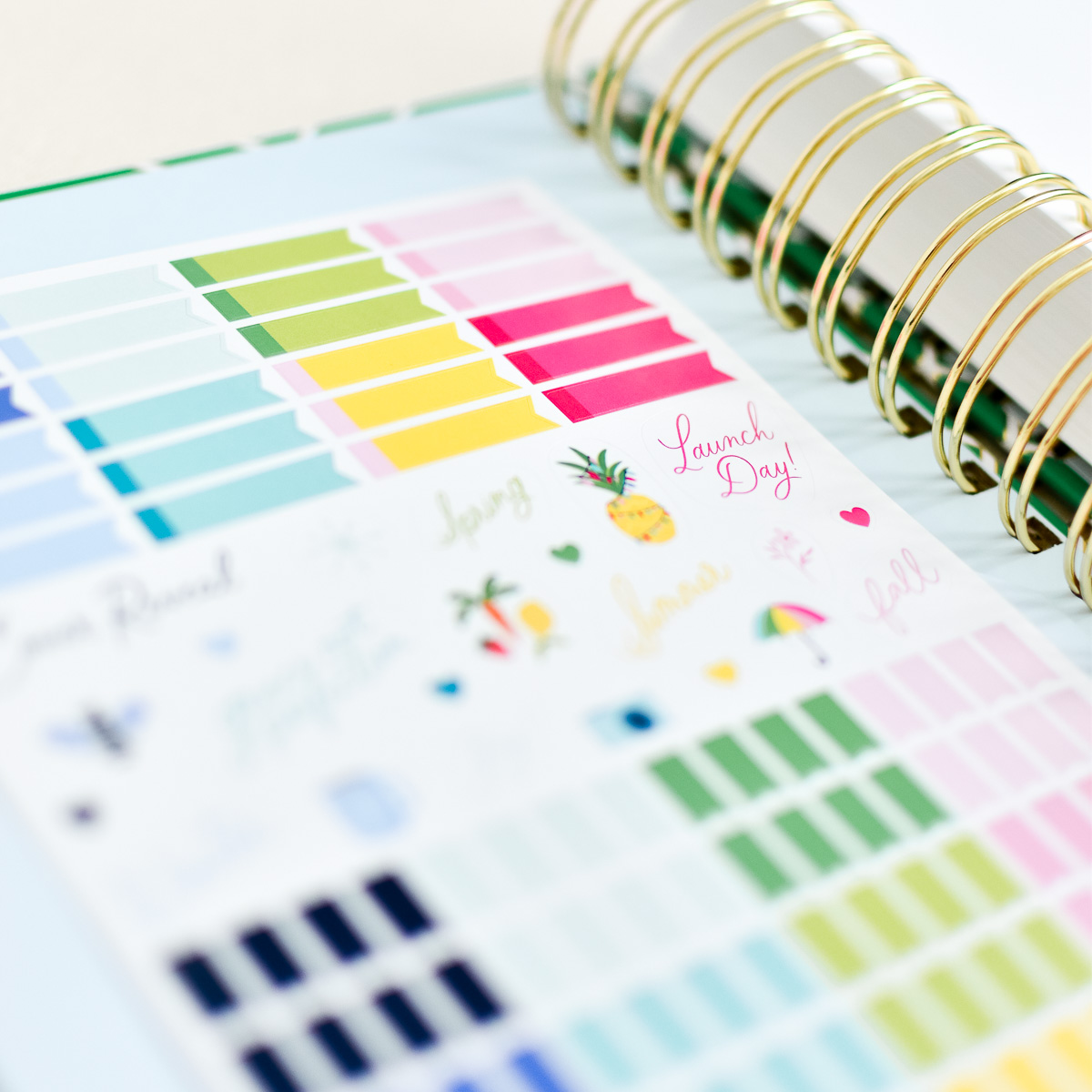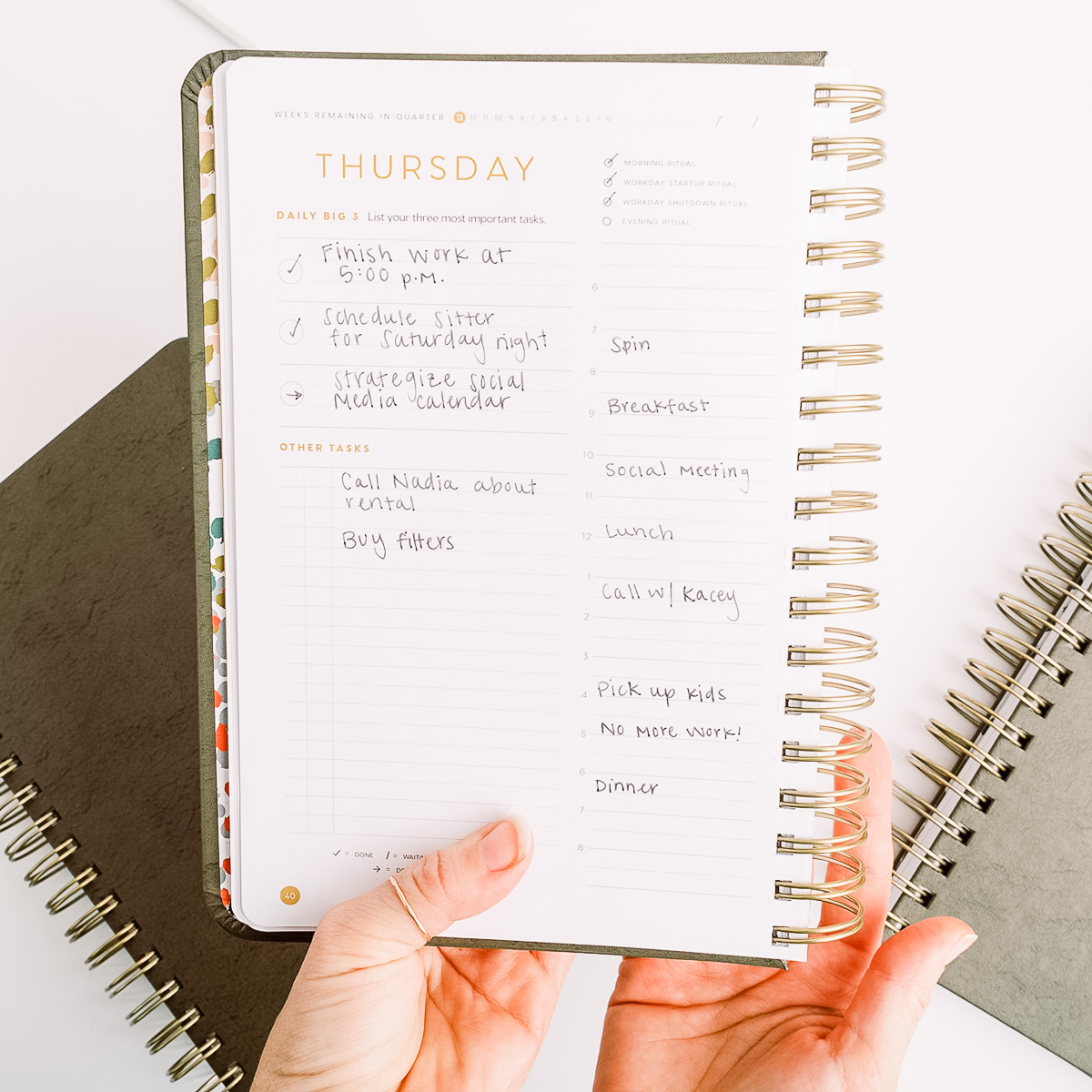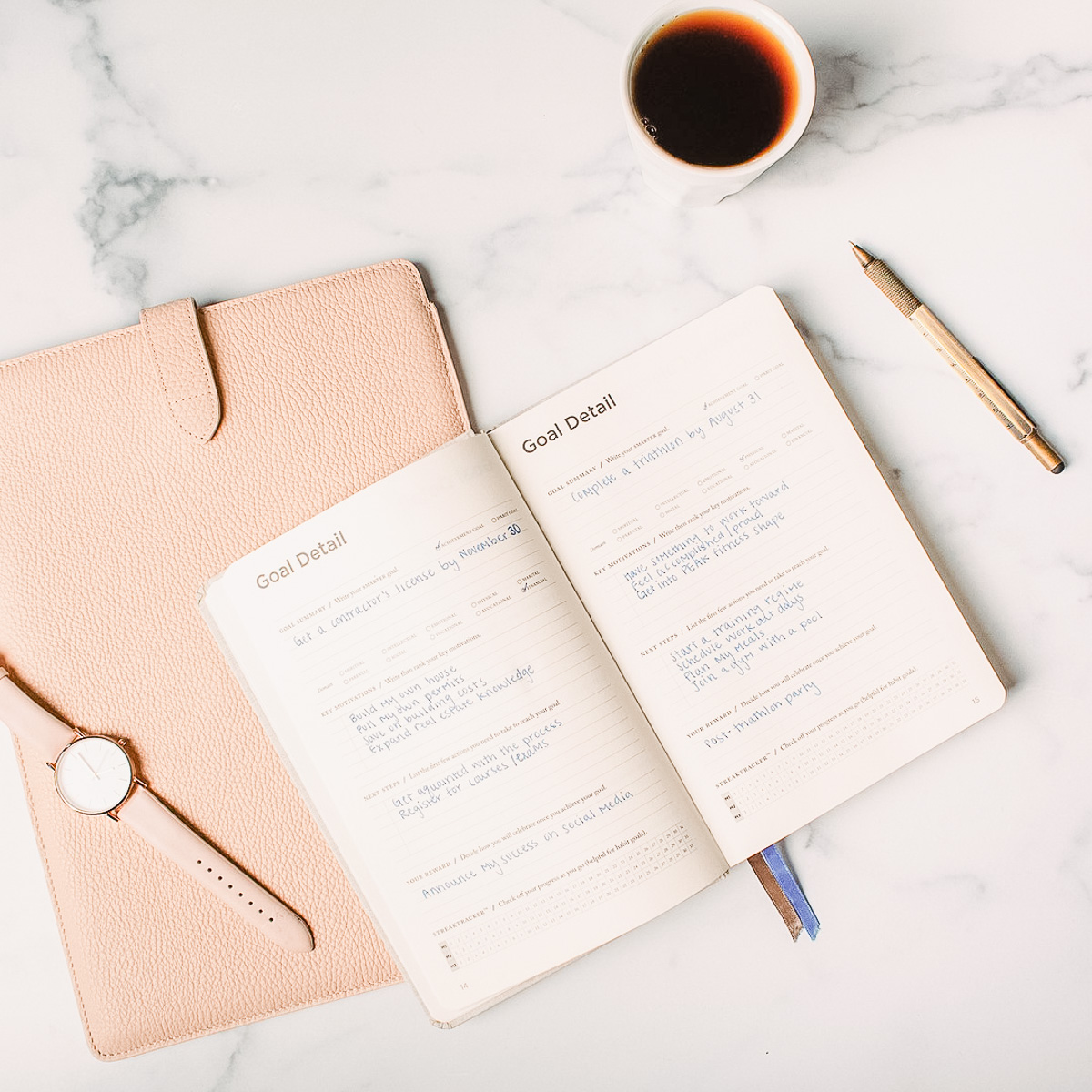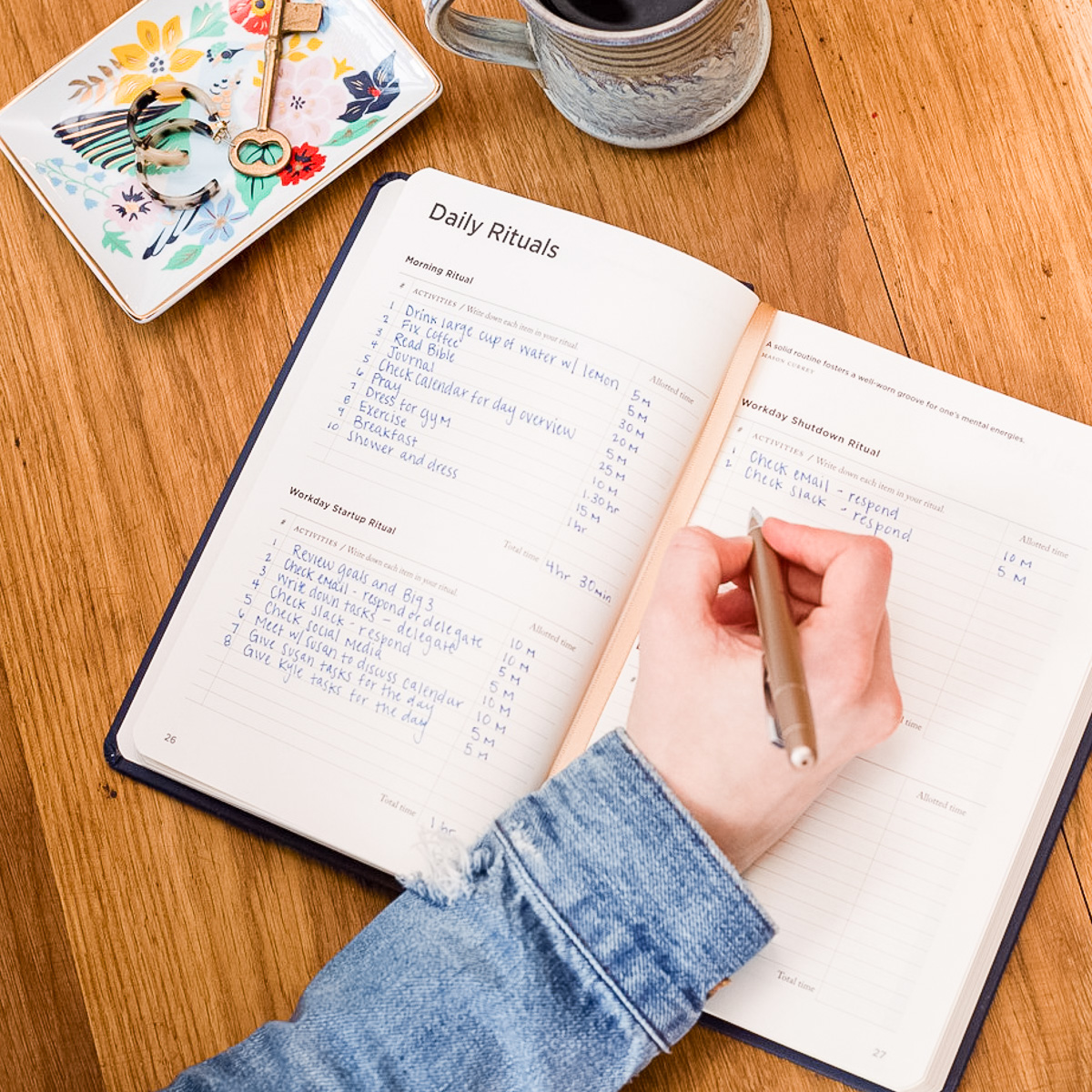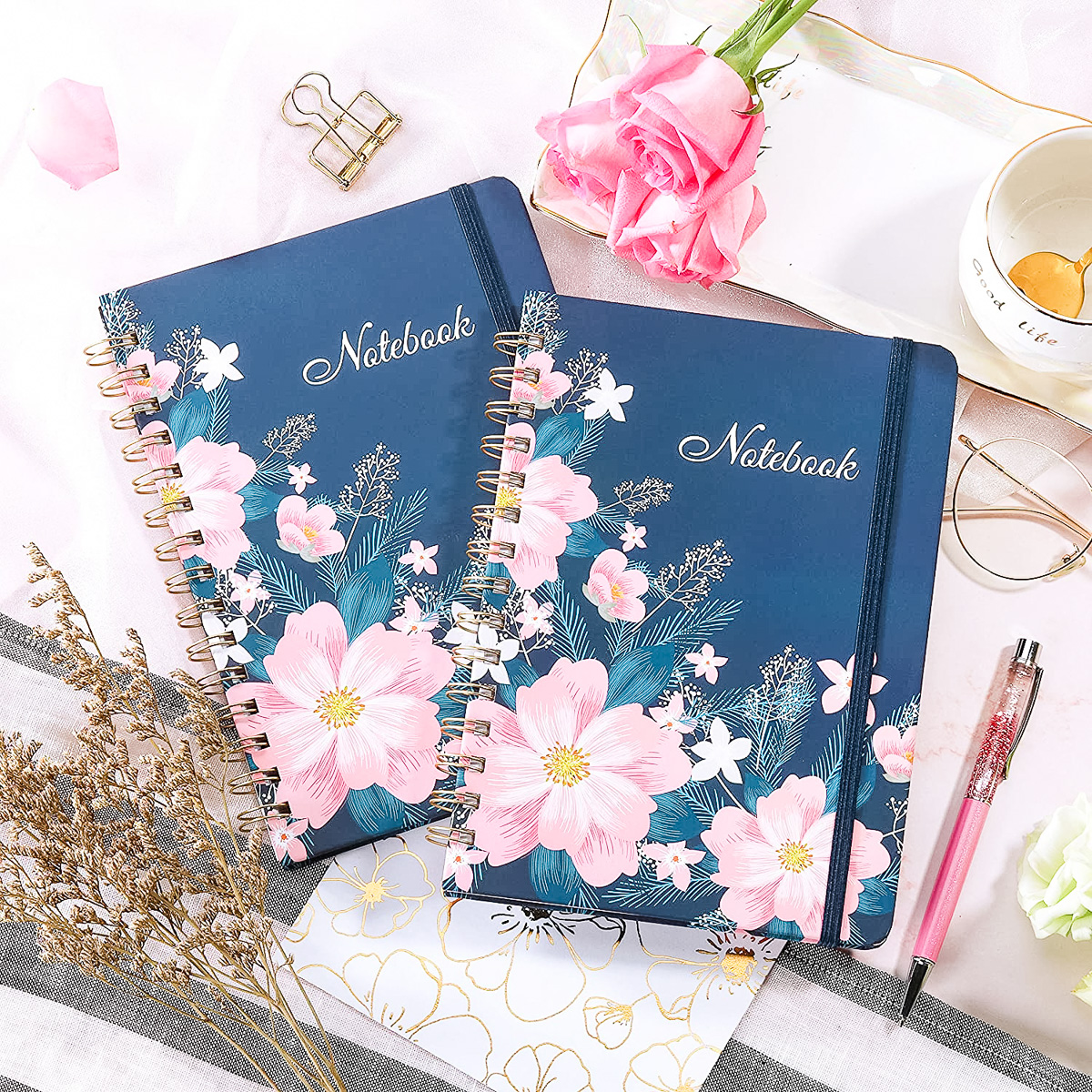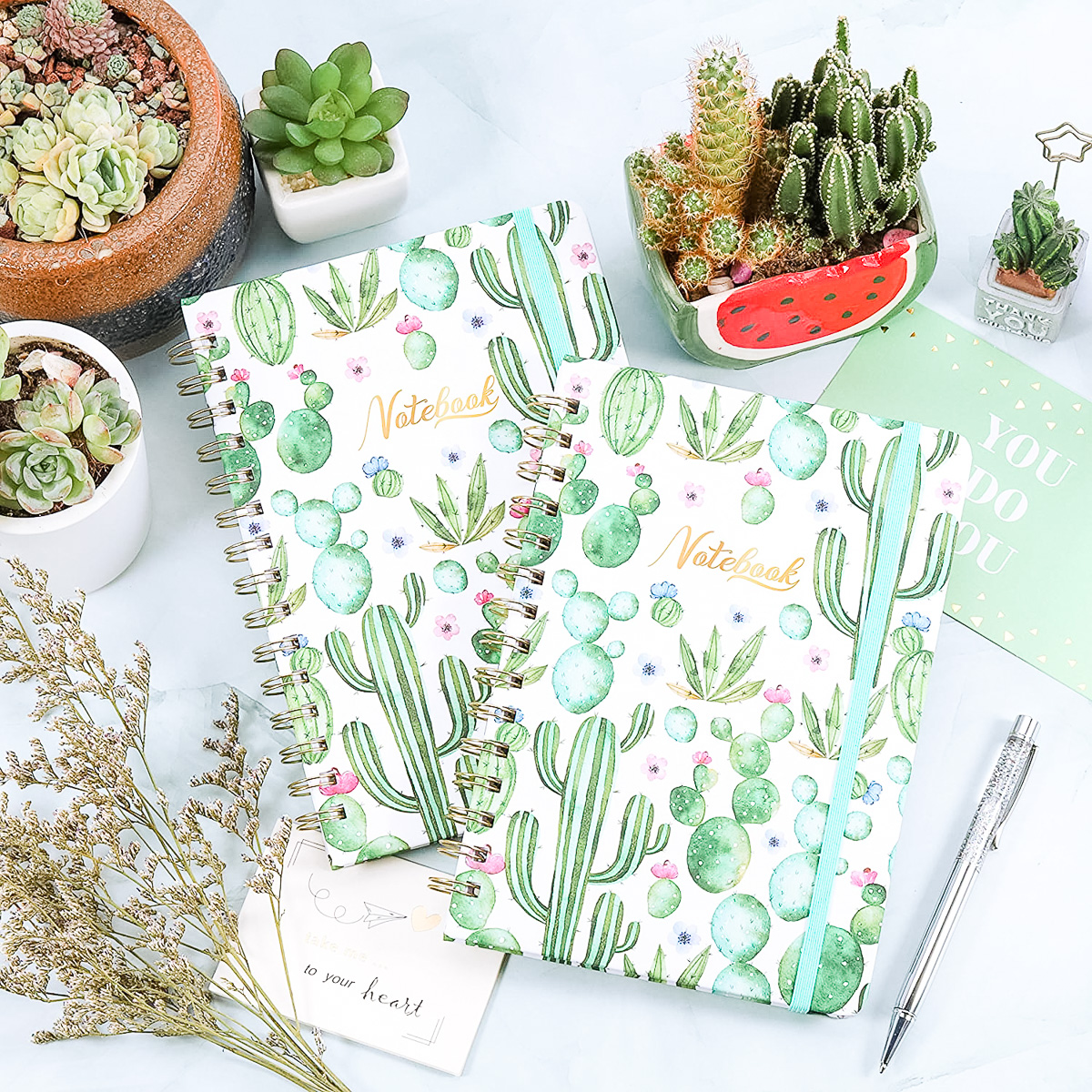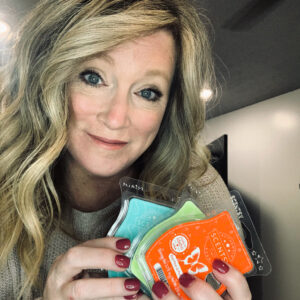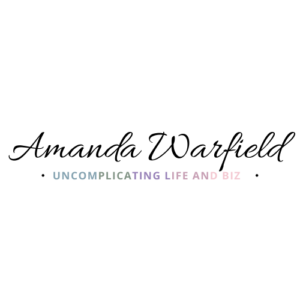
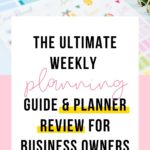

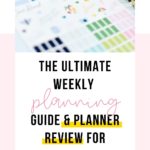





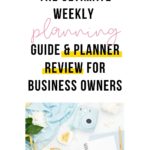

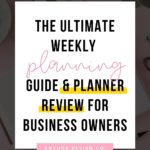


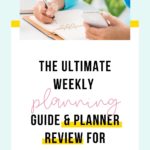


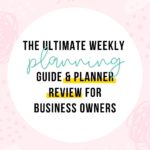
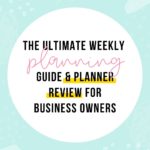



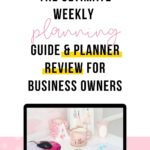
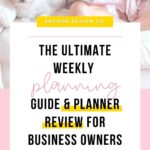
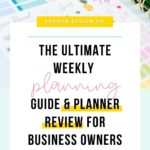





















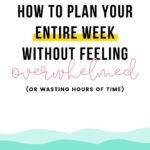
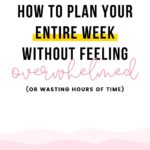
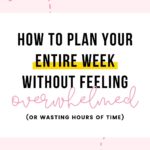
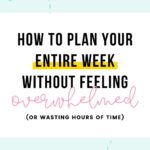
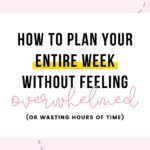






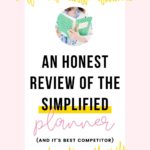

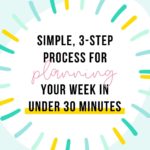
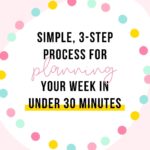
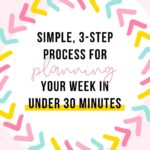

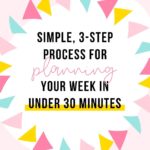
















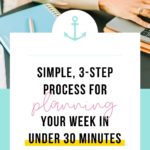
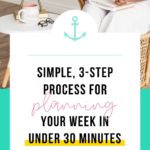


When it comes to planning, I feel like there are two groups of people:
- The people who are totally in love with it and never need to be reminded to use their planner, and
- The people who, despite probably KNOWING they need a planner, feel totally overwhelmed by the idea of planning an entire week… and therefore avoid it, put it off, or totally ignore it altogether.
For the record, I was person two for a VERY long time. Still am, if I allow myself to be! Ha!
And while these statements are a little bold and maybe not 1000% true of everyone, I feel like they're pretty solid general categories that many people can identity with. Are you nodding your head along, or have I already lost you? 😉 Stick with me!
The truth is, planning can feel hard or overwhelming if you don't know where to start or have a structured, duplicatable process. This doesn't mean that the plan itself has to be rigid… it just means that how to figure out your plan it a specific process so that you know you're never leaving anything out, missing anything, or overwhelming your schedule with more than you can reasonably accomplish.
And today, I want to give you an inside peek at the process I use to plan my week!
Whether you already have a process in place but feel like there's something missing, or you've been searching for a process that you'll actually be able to follow through on (I know how hard that can be!) my hope is that seeing the behind-the-scenes of what has given me peace and structure will help bring you the same.
But… before we dive in, let's talk about actual planners… like, where you're going to store all this info.
The truth is, there's no one option that is guaranteed to perfect for everyone forever. You'll never hear me say there's one path to success! But here's what I use and have used in the past:
The Simplified Planner by Emily Ley
The planner that got me started and I recommend to everyone first is the Simplified Planner by Emily Ley. The BIGGEST reason I fell in love with this planner, and still love it to this day is it's namesake: it's simplicity.
The Simplified Planner piqued my interest after I spend years feeling overwhelmed and frustrated by planners that were asking for the world… you probably know the type. The ones that ask you to track a billion things. So much so that you don't bother tracking anything because it's just too much. After years of blaming myself, thinking that I was somehow failing for not following through, I realized that these planners were overcomplicated. It wasn't that I was a failure… it was that the system was sustainable. That's when I switched to the Emily Ley Simplified Planner and the heavens opened up… figurately, lol! It was a breath of fresh air… a planner I could actually keep up with because it was literally designed to simplify my life, not complicate it.
The Simplified planner comes in two styles: a weekly option where you can see every day of the week at once on a two page spread, and a daily option where you see one day per page. They're both great, and it's a personal preference… I use the weekly view!
So all in all, The Simplified Planner is for you if:
- You're tired of overcomplicated planners
- You want to take baby steps to develop a routine that lasts
- You're looking for an option that isn't overwhelming
- Bonus: You want your planner to be drop dead gorgeous. No seriously, these planners are stunning.
The Full Focus Planner by Michael Hyatt
The planner I currently use after 3 years with my beloved Simplified Planner is the Full Focus Planner by Michael Hyatt. I switched to this planner once I'd gotten a firm plan in place and had successfully followed through on it for a few years.
This planner is a bigger expense than the Simplified Planner because you need to buy 4 planners per year – one every quarter, so it comes as no surprise it is about 4X the cost of a Simplified Planner. It also requires a little more commitment. In addition to weekly planning, you're also doing a weekly, monthly, and quarterly personal review.
I point this out not to scare you, but to help you make an informed decision about what is going to be most sustainable and do-able for you right now, at this stage of life. When I first started using a planner I would not have followed through on a Full Focus Planner… there's just no way! So don't feel stressed if the Full Focus Planner is too much right now.
If you're not in a place where it feels like you want to do all that, stick with the Simplified Planner! You can always switch later once you've taken the first baby steps of getting into a weekly planning routine. That's the beauty of planers… you get a fresh start every year, no pressure.
So all in all, The Full Focus Planner is for you if:
- You're looking to add more self-reflection to your planning routine
- You already have a good follow-through when it comes to planning
- You have the budget for a planner with a bit of a luxury price (this is important, not because money is everything but because if you spend above your budget on your planner it's going to add unnecessary pressure. No doubt about it… this is not a cost-effective planner)
Notebook Planning
The alternative to both planners is to just grab yourself a notebook and use one page per day. If you're on a budget or don't want to commit to the expense of a planner, do this!
When you think about it, that's all a planner really is: a notebook. It just happens to have some formatting inside… the formatting is a convenience. This is exactly what I did my first year in business. Every day I just wrote my plan in one page of my mini notebook. So if you need structure but for any reason can't invest in a planner, don't stress. A notebook will do the trick!
So all in all, a notebook is for you if:
- You need an ultra budget friendly option
- You feel comfortable following through without having the structure of a detailed planner page
- You don't want to plan more than a week ahead (this is important because you'll need to manually label every page which could be a little annoying if you need to make a month at a time or more)
How to Plan
So now you have three options for WHERE you'll do your planning… ready to move on and check out my system for HOW to plan? I break it down into a 3 steps:
- Brain dump
- Prioritize
- Sort
Like I said before: When I started using the Simplified Planner, I'd been burned. I was feeling VERY much like I was failing over and over when it came to planning… and then I realized it wasn't ME that was the problem. It was the overcomplicated, unsustainable system I was trying to box myself into.
So when I finally got into a routine, it was a priority to make sure it was simple. Something I could really follow through on. My method of planning is an ultra simplified version of what Michael Hyatt teaches in his Full Focus Planner and it can be done in any of the planners mentioned on this page! So let's break down the 3 step system I use to plan every week:
Step 1. Brain Dump
Before I ever touch my planner, I start with a brain dump of everything I need to do that week. If your planner has a blank notes page, you could do it there. Or you can grab a scrap piece of paper and do this on that. Even a whiteboard would work. It doesn't really matter… any blank surface will do.
On your paper, you're going to literally brain dump EVERYTHING you want/need to do this week. You can separate by business and personal, or mix it up. I personally mix it up because again, simplicity.
And here's the big challenge for you: every time you write something down as yourself “how many steps will this take?” and then write all the additional steps, too. For example: Instead of writing “schedule podcast episode” I would break that down into:
- Create a task in ClickUp
- Write notes
- Record episode
- Edit episode
- Upload to podcast host
- etc.
This step is absolutely crucial to the success of this method: this step is what gives you a truly realistic grasp on how much you need to do. See how “schedule podcast,” which might seem like one simple task, actually is much more in-depth? So now I know: don't schedule this is a 20-minute task. It's really about 3 hours of work that I might even split among multiple days. If I tried to schedule this all into a 20-minute period there's no doubt I end that day feeling frustrated at myself for not getting it all done. Because I broke it down, I can be more realistic about my schedule.
Step 2. Prioritize
Now that you have your all-inclusive brain dump list it's time to start prioritizing. Mark everything that is MOST important. Be selective, be picky – not everything matters the same amount. Take a minute to highlight, circle, or star the most important tasks. The one rule I want to give you when doing this is to select 21 most important tasks or less. You might not even have 21 tasks on your list and if that's the case, that's totally fine! But if your list is hefty, limit yourself to 21 or fewer most important tasks. Here's why…
Step 3. Sort
Once you've marked all of your priorities, it's time to start sorting tasks into each day of the upcoming week. And you guessed it… we're starting with your priorities!
Each day ass 3 priorities. The 3 MOST important things you need to accomplish THAT DAY. You could think of it like this: If you got to the end of the day only accomplishing three things, which three would they need to be?
Then, once you've set your top 3 priorities for each day, add in the rest of your tasks throughout the week where it makes sense and where there's room. By the time you're done every task should be set to a day and each day should have a list of 3 priorities and then a general list of “everything else.”
Bonus. Follow through!
The bonus, or the purpose, of course is to follow through on your plan! Every morning start by looking at your planner. Review your 3 priorities and make sure they are still accurate. If they're not, take a minute to make any necessary adjustments. It's ok to change your plan – remember, this isn't meant to be rigid. It's meant to be supportive.
Once you've reviewed your plan and made adjustments as needed, time to dive in! Focus on accomplishing your 3 priorities first, if possible, then work on your “everything else” list. Of course, if your priority is time-sensitive (maybe its an appointment at 4 pm or game night with the kids at 6:30 pm) then, of course, you might not finish it before you start working on your “everything else” list… so don't get too caught up in the”rules.”
At the end of the day take some time to review your plan again. Did you accomplish everything? If not, no stress: think about why so that you can use that lesson (if there is one!) to better plan next week, if possible. And if there are any tasks left over, take a minute to move your plan around and assign them on different days and re-prioritize as needed. This only needs to be 5 to 10 minutes… definitely don't feel like you need to plan an hour every morning and night!
Each week, be sure to plan in a half an hour to follow this three-step process. I like to do it on Sunday nights or Monday mornings but there are no rules. If Friday night works for you, do it! If you want to plan from Wednesday to Wednesday, go ahead. It only matters what works for you, so listen to your own needs and don't put pressure on yourself to do anything other than what feels best for you.
That's it, friend! 3 planner options and a simple 3 step plan for planning your week.
I hope that you not only found this helpful but also found it freeing. If nothing else, I want you to walk away from this blog post feeling like you have simple, sustainable options that you can really follow through on. I hope that you'll feel less stressed and more at peace with the idea of planning.
And if you decide to give any part of this blog post a try, whether it's one of the planners or the system for planning, I'd love to see! Snap a pic and tag @Anchor Design Co. on Facebook, share a post in the Build it Like a Business Facebook Group or @AnchorDesignCo on Instagram. I want to cheer you on!
Happy planning!
xo Keleigh



